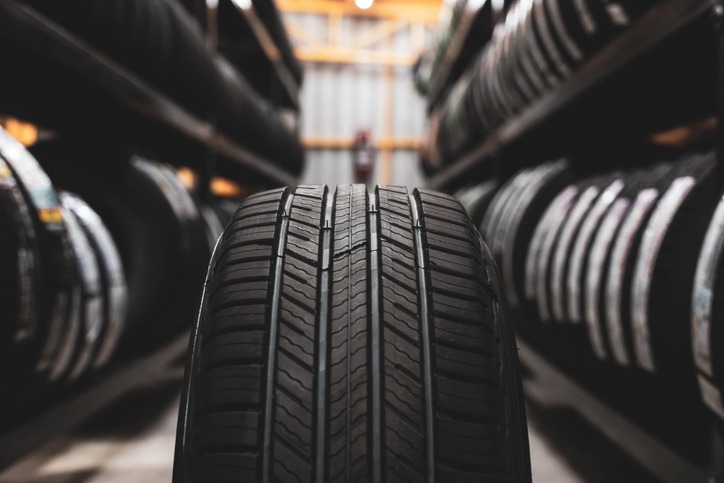When it comes to identifying leading tire manufacturers in a thickly saturated market, there are very few leaders in tire technology that are named after a physical city and place which can also be visited. So many tire companies and brands today can seem like fly by night operations, changing their names or spawning sister brands to attempt to slowly oversaturate an already oversaturated tire market. Some tire companies and brands will even go as far as naming their tire brand or line after a place or location that isn’t necessarily associated with the tire line. There are a lot of marketing tactics out there today, especially in the tire industry. There are a few companies, however, that are shining stars of the industry with longstanding reputations and deeply rooted community involvement. Today, we will pull the curtain to take a brief look at one of Japan’s biggest and longest operating tire companies to discuss reasons for their success and high praise in a tire market that is heavily saturated with competition from all around the world.
Humble Beginnings
The Yokohama Rubber Company (named after Yokohama, Japan) was established in 1917, making it the second Japanese tire company after Dunlop tires. In over one hundred years, Yokohama has made some serious and rapid advancements in tire and manufacturing technology which have allowed them to steer ahead of the curve and their competition. In this article, we will briefly overview the history of Yokohama Tires, their major milestones, accomplishments, contributions to saving the planet, and what makes Yokohama tires some of the best rated tires for your car or whichever mode of transportation you prefer to use on a regular basis. Please read on to learn more about the history of Yokohama tires!
Early Successes
The magic in Yokohama’s early success was how quickly they were able to get off the ground as an organization. Starting shortly after the Yokohama Rubber Company was founded, the company expanded rapidly, opening its Hiranuma Plant in 1920 and its Mie Plant a little over a couple decades later in 1943. These swift and early growth spurts helped to cement Yokohama’s foundation and presence early on, allowing the company to grow and develop into the tire giant they are today. Having two plants up and operating before World War 2 was a big benefit to the timing of Yokohama’s history of success. This was a tremendous feat given the social and political climates in Japan at the time this occurred. With the dawn of the Yokohama Tire Company and their two manufacturing plants, a plan for growth was in place to take advantage of a newly emerging tire market. The executives at Yokohama Tire had plans in place to expand their company and create new tire markets globally to help expand their brand and presence.
New Markets
In 1957, Yokohama moved its head office to Shibatamura-cho in Tokyo (now located at 36-11, Shimbashi 5-chome, Minato-ku, Tokyo). After over a decade of moving their offices to Tokyo, Yokohama Tire Corporation was established in the United States as a tire sales company in 1971. This move would prove to be one of Yokohama Tires’ biggest as the American tire market and automotive racing scene was in full boom at this time. Entering competitive automotive racing helped to gain Yokohama Tire more notoriety in the American tire market. Shortly following their entry and involvement in competitive motorsports, the company marked its fifth consecutive win for Yokohama Tires in the world-famous Southern Cross Endurance Race. This was one of the biggest and most competitive automotive racing competitions of the time which still exists to this day! Today, Yokohama is a leading tire manufacturer with a global presence and dedication to improving the world with their environmental strategies. The environmental benefits from Yokohama can be seen in their manufacturing technologies as well as their unique tire compounds.
Modern-Day Yokohama Tire
Yokohama Tires offers a wide range of tires for passenger cars, light trucks, SUVs, commercial vehicles, and off-road construction vehicles. Yokohama has been committed to reducing its environmental impact and was named to the 2019 Climate Change A list by global environmental impact group CDP. Yokohama tires are built to offer drivers better control while also reducing CO2 emissions to help reduce their carbon footprint. In addition to improving the environment through new manufacturing processes, Yokohama has also improved its tire compounds. Relying less on rubber trees, Yokohama has improved their treads by impregnating more silica into their tire compounds for better traction, stopping, and fuel economy. Yokohama strives to be a green and eco-friendly tire manufacturer with its investments to help the environment.
Yokohama is a sponsor of the Los Angeles Angels baseball team. Many team vehicles and LA Angels team players own and use Yokohama tires on their daily vehicles and fleet. Yokohama tires can be found on high-performance, passenger, light truck, commercial, and off-road construction vehicles around the world.
Outro
Tires come in many sizes and tread patterns along with brands and manufacturers. It’s important to do your research and learn more about the tires you are considering to buy as well as the company who manufacturers them. Not all tires are created equal and any tire brands that you come across which are unfamiliar should be investigated thoroughly, as well as purchased at your own risk. With an abundance of seemingly name brand tires available to consumers globally, the availability of quality tires is at its current peak. Consider only the top tier tire manufacturers to be safe when purchasing your next set of tires. When the time comes to replace the tires on your vehicle, you should consider Yokohama, not only for their fantastic and longstanding reputation and quality products, but also for their treadwear warranties which can exceed 60,000 miles! That’s enough to drive around the world twice and still have some tread left. Where will you drive with your Yokohama tires? Let us know in the comments below!

